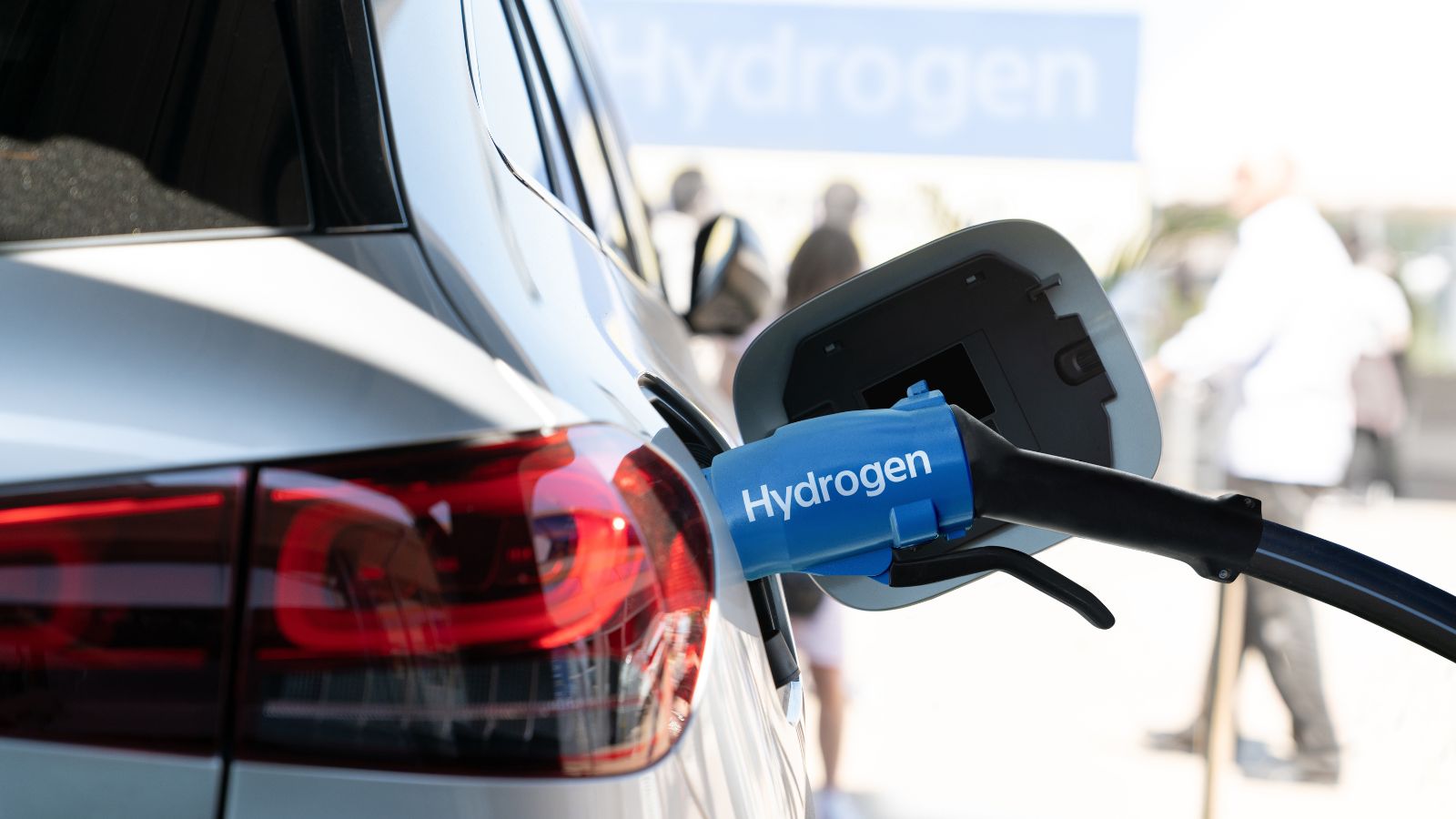Canada is rapidly emerging as a global leader in clean energy innovation and sustainability. With abundant natural resources, strong government policies, and growing investments in green technology, the country is making significant strides toward reducing carbon emissions and building a low-carbon economy. Canada’s efforts encompass all aspects of the clean energy transition, from expanding renewable energy sources to supporting electric vehicles and developing cutting-edge technologies, such as small modular reactors. Here are 24 ways Canada is winning the clean energy race.
Clean Electricity Strategy

Canada’s Clean Electricity Strategy is a comprehensive plan to generate most of the country’s power from clean sources by 2035. It focuses on expanding hydro, wind, solar, and nuclear energy while modernizing the electricity grid to handle these renewable sources efficiently. The strategy supports phasing out coal-fired power plants and reducing greenhouse gas emissions from the electricity sector. This ambitious plan aims to provide reliable, affordable, and low-carbon electricity across all provinces and territories. It is a cornerstone of Canada’s commitment to meeting climate targets and powering the future with sustainable energy.
Carbon Pricing Initiatives

Canada has implemented carbon pricing systems to encourage businesses and individuals to reduce greenhouse gas emissions. By assigning a cost to carbon pollution, these initiatives promote cleaner energy use and innovation. The federal carbon pricing framework applies a fuel charge and output-based pricing system, creating financial incentives to cut emissions. Several provinces have developed their carbon pricing mechanisms that meet or exceed federal standards. These policies are critical in steering the economy toward lower emissions and supporting Canada’s goal of achieving net-zero emissions by 2050.
Clean Technology Tax Credits

Clean technology tax credits in Canada offer financial support to companies that develop and adopt environmentally friendly technologies. These credits help reduce upfront costs and encourage investment in renewable energy, energy efficiency, and pollution reduction solutions. By lowering financial barriers, tax credits accelerate innovation in clean technologies across various industries, including manufacturing, transportation, and power generation. This government incentive is a vital tool in promoting sustainable economic growth while reducing Canada’s overall carbon footprint. It helps position the country as a leader in the global green technology market.
Clean Hydrogen Investment

Canada is investing heavily in clean hydrogen as a key part of its low-carbon energy future. Clean hydrogen, produced using renewable energy or natural gas with carbon capture, can replace fossil fuels in industries like transportation, manufacturing, and power generation. Federal and provincial governments support research, infrastructure development, and commercial projects aimed at scaling up the production and utilization of hydrogen. These investments aim to reduce emissions, create jobs, and position Canada as a global leader in hydrogen technology. Clean hydrogen is expected to play a vital role in achieving net-zero emissions by 2050.
Carbon Capture and Storage Projects

Canada supports several carbon capture and storage (CCS) projects that capture carbon dioxide emissions from industrial sources and store them underground to prevent release into the atmosphere. CCS technology is crucial for reducing emissions from sectors that are challenging to decarbonize, such as the oil and gas industry and heavy industry. Government funding and partnerships with private companies help develop and expand CCS facilities across the country. These projects make a significant contribution to Canada’s climate goals by reducing greenhouse gas emissions while supporting economic growth in the resource sector.
Electric Vehicle Incentives

To accelerate the adoption of electric vehicles (EVs), Canada offers various incentives, including rebates, tax credits, and support for the development of charging infrastructure. These programs reduce the cost of purchasing EVs and improve accessibility for Canadians. Federal and provincial initiatives encourage consumers, businesses, and municipalities to switch from gasoline-powered vehicles to cleaner alternatives. Expanding EV infrastructure, such as public charging stations, is also a priority to support long-distance travel and urban commuting. These efforts help reduce transportation emissions, improve air quality, and support Canada’s broader clean energy and climate targets.
Indigenous-Led Clean Energy Projects

Indigenous communities in Canada are increasingly leading clean energy projects that promote sustainable development and economic growth. These projects include solar, wind, hydro, and biomass energy initiatives that align with traditional values and environmental stewardship. Support from federal and provincial programs helps Indigenous groups build capacity, access funding, and develop partnerships. Indigenous-led clean energy initiatives strengthen local economies, create employment opportunities, and promote energy independence. It also fosters reconciliation by involving Indigenous peoples in decision-making and benefiting from Canada’s transition to a low-carbon future.
Energy Innovation Program

The Energy Innovation Program (EIP) offers funding and support for the development and commercialization of clean energy technologies in Canada. It aims to accelerate projects that reduce greenhouse gas emissions and improve energy efficiency. The program supports emerging technologies in areas like renewable energy, energy storage, and smart grids. By backing innovative solutions, the EIP helps businesses scale up clean technologies and compete globally. This program is a crucial component of Canada’s strategy to foster economic growth while transitioning to a sustainable energy future.
Clean Fuels Fund

The Clean Fuels Fund supports projects that increase the production and use of low-carbon fuels in Canada. This initiative targets fuels such as renewable natural gas, biofuels, and hydrogen to reduce emissions in transportation, industry, and heating. Funding helps build production facilities, infrastructure, and distribution networks for clean fuels. The program encourages collaboration among governments, businesses, and communities to accelerate the transition away from fossil fuels. The Clean Fuels Fund is a key component of Canada’s plan to decarbonize sectors that are traditionally hard to electrify.
Small Modular Reactors

Small modular reactors (SMRs) are a new generation of nuclear technology that Canada is actively developing to provide reliable, low-carbon power. These compact reactors offer flexible energy solutions suitable for remote communities, industrial sites, and grid support. SMRs produce clean electricity with lower upfront costs and enhanced safety features compared to traditional nuclear plants. Canadian research and partnerships are advancing SMR design, regulation, and deployment. This technology is expected to play a crucial role in Canada’s clean energy mix, helping to meet its net-zero emissions targets.
Offshore Wind Energy Projects

Canada is investing in offshore wind energy to diversify its renewable energy portfolio. Offshore wind farms harness strong, consistent winds over the ocean to generate large amounts of clean electricity. Projects along Canada’s Atlantic and Pacific coasts aim to provide sustainable power to coastal communities and support grid reliability. The government supports development through funding, permitting, and partnerships with Indigenous groups. Offshore wind energy complements onshore renewables and contributes to reducing greenhouse gas emissions as Canada transitions to a cleaner energy system.
Grid Modernization and Smart Technologies

Modernizing Canada’s electricity grid is crucial for integrating renewable energy sources and enhancing efficiency. Smart grid technologies utilize sensors, automation, and data analytics to monitor and manage electricity flow in real-time. This enables better demand response, reduces outages, and supports distributed generation, such as rooftop solar. Grid modernization also facilitates the integration of electric vehicle charging and energy storage. Investments in smart infrastructure enhance reliability, affordability, and environmental performance. Canada’s efforts in grid modernization are crucial for achieving a flexible, resilient, and clean energy future.
Net-Zero Emissions Targets

Canada has committed to achieving net-zero greenhouse gas emissions by 2050. This ambitious goal requires significant reductions across all sectors, including energy, transportation, industry, and agriculture. The government has established interim targets and policies to guide the transition, including the phasing out of coal power and the promotion of clean technologies. Achieving net-zero involves a combination of renewable energy adoption, energy efficiency, carbon capture, and behavioural changes. These targets position Canada as a responsible global actor in combating climate change and encourage innovation and investment in sustainable solutions.
Clean Energy Workforce Development

Building a skilled workforce is essential for Canada’s clean energy transition. Investments in training, education, and apprenticeships prepare workers for jobs in renewable energy, energy efficiency, electric vehicle maintenance, and related fields. Programs focus on upskilling current workers and attracting new talent, including underrepresented groups and Indigenous peoples. Workforce development supports economic growth and job creation, ensuring the clean energy sector has the expertise needed to scale up technologies. Canada’s commitment to workforce readiness helps sustain long-term success in achieving clean energy goals.
Public Awareness and Engagement

Raising public awareness and encouraging engagement are key components of Canada’s clean energy strategy. Government campaigns, educational programs, and community initiatives inform citizens about the benefits of clean energy and climate action. Engaging the public fosters support for policies, adoption of energy-efficient practices, and participation in local clean energy projects. Public involvement also ensures diverse voices contribute to decision-making. This widespread awareness helps build momentum for the clean energy transition, making sustainability a shared national priority.
International Clean Energy Partnerships

Canada actively collaborates with other countries through international clean energy partnerships. These partnerships facilitate the sharing of knowledge, technology, and best practices, thereby accelerating the development of global clean energy. Canada participates in initiatives like Mission Innovation and the Clean Energy Ministerial, fostering cooperation on innovation, finance, and policy. These collaborations support the deployment of renewable energy, energy efficiency, and low-carbon technologies worldwide. By engaging internationally, Canada helps address climate change on a global scale while strengthening its clean energy sector through access to new markets and expertise.
Research and Development Investments

Canada invests significantly in research and development (R&D) to drive innovation in clean energy technologies. Funding supports universities, laboratories, and private companies working on breakthroughs in renewable energy, energy storage, smart grids, and carbon capture and sequestration. R&D investment accelerates the commercialization of new solutions that reduce emissions and improve efficiency. This commitment fosters a competitive clean energy industry and attracts global partnerships. A continued focus on R&D is vital for Canada to maintain its leadership in clean technology and meet ambitious climate and energy goals.
Energy Storage Solutions

Energy storage technologies are crucial for managing the intermittent nature of renewable energy sources, such as solar and wind. Canada is advancing various storage solutions, including batteries, pumped hydro, and thermal storage, to ensure a stable and reliable electricity supply. Energy storage helps balance supply and demand, smooth grid operations, and enables higher integration of renewables. Federal and provincial programs support the development and deployment of storage systems across the nation. These efforts strengthen grid resilience and flexibility, making Canada’s clean energy transition more effective and sustainable.
Electric Public Transit Initiatives

Canada is expanding electric public transit to reduce emissions and improve urban air quality. Investments support the development of electric buses, light rail systems, and charging infrastructure in cities across the nation. These initiatives lower dependence on fossil fuels and help meet climate targets by reducing transportation sector emissions. Federal and provincial funding programs encourage municipalities to transition their fleets to electric vehicles. Expanding clean public transit options improves accessibility, reduces traffic congestion, and promotes sustainable urban mobility. These efforts contribute significantly to Canada’s clean energy and environmental goals.
Building Energy Efficiency Programs

Improving energy efficiency in buildings is a key focus in Canada’s clean energy strategy. Programs promote retrofits, high-efficiency heating and cooling systems, and better insulation to reduce energy consumption. New construction standards also emphasize sustainable design and energy-saving technologies. These initiatives lower greenhouse gas emissions, decrease energy costs for homeowners and businesses, and reduce strain on the electricity grid. Government incentives and grants help make energy-efficient upgrades affordable. Enhancing building efficiency supports Canada’s climate commitments and creates healthier, more comfortable indoor environments.
Sustainable Agriculture Practices

Canada promotes sustainable agriculture practices to reduce emissions and protect natural resources. Techniques include precision farming, reduced tillage, cover cropping, and improved nutrient management to enhance soil health and carbon sequestration. Support programs encourage farmers to adopt clean technologies and renewable energy sources, such as biogas and solar power. Sustainable agriculture helps lower the sector’s environmental impact while maintaining productivity and food security. These practices align with Canada’s broader climate goals and contribute to building a resilient, low-carbon agricultural economy.
Clean Energy Export Opportunities

Canada is exploring opportunities to export clean energy technologies and resources globally. With its expertise in renewable energy, nuclear technology, and energy storage, Canada is well-positioned to supply clean solutions to international markets. Exporting clean energy products and services supports economic growth, creates jobs, and strengthens trade relationships. Canada also exports clean electricity to the United States through cross-border transmission lines. These export opportunities help spread sustainable technologies worldwide while enhancing Canada’s role as a leader in the global clean energy transition.
Climate Resilience and Adaptation Strategies

Canada is developing climate resilience and adaptation strategies to prepare communities and infrastructure for the impacts of climate change. These strategies include improving energy systems to withstand extreme weather, investing in flood protection, and enhancing emergency response capabilities. Integrating resilience into clean energy projects ensures reliability despite changing conditions. Indigenous knowledge and local input are incorporated to effectively address regional risks. Climate adaptation supports Canada’s long-term sustainability goals by protecting economic assets, public health, and the environment in a warming world.
Sustainable Urban Development Initiatives

Sustainable urban development initiatives in Canada focus on creating greener, more livable cities. These include promoting energy-efficient buildings, expanding public transit, increasing green spaces, and encouraging compact growth to reduce sprawl. Integrating clean energy technologies such as solar panels and district heating supports low-carbon urban living. Collaboration between governments, developers, and communities drives these efforts. Sustainable urban development reduces emissions, improves quality of life, and supports Canada’s climate commitments by shaping cities that are resilient and environmentally friendly.
21 Products Canadians Should Stockpile Before Tariffs Hit

If trade tensions escalate between Canada and the U.S., everyday essentials can suddenly disappear or skyrocket in price. Products like pantry basics and tech must-haves that depend on are deeply tied to cross-border supply chains and are likely to face various kinds of disruptions
21 Products Canadians Should Stockpile Before Tariffs Hit
